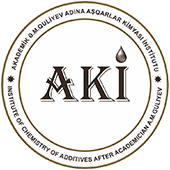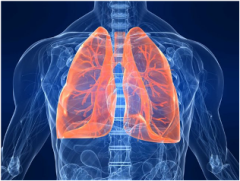A research team from Tongji University in China have made a breakthrough in human lung regeneration technology. For the first time, researchers have regenerated patients’ damaged lungs using autologous lung stem cell transplantation in a pilot clinical trial. The study can be found in the open access journal Protein & Cell which is published by Springer Nature.
For patients suffering from chronic pulmonary diseases, lung stem cell transplantation could be their biggest, if not last, hope.
“Both patients and researchers need great courage to step forward from benchside to bedside, to test the new therapeutic strategy. Now the good news is that the strategy looks quite promising,” said author of the study, Professor Wei Zuo.
Already in 2015, Professor Zuo and his colleagues identified p63+/Krt5+ adult stem cells in a mouse lung, which had potential to regenerate pulmonary structures including bronchioles and alveoli. Now Professor Zuo’s lab in Tongji University and Kiangnan Stem Cell Institute is focusing on lung stem cells in humans rather than mice.
“The anatomical structure and development process of human lungs are quite different from that of mice. Only by directly studying human subjects can we get close to the truth and finally solve the real medical problem,” Zuo explained.
The researchers found that a population of basal cells labeled with an SOX9+ marker had the potential to serve as lung stem cells in humans. By working with Ren Tao, professor and physician in Shanghai East Hospital, they used lung bronchoscopy to brush off and amplify these lung stem cells from tiny samples. About 0.2% of the cells from each brush were lung stem cells. The genetic stability and molecular phenotypes of these cells could be well maintained over scaled expansion.
In order to test the capacity of lung stem cells to regenerate lung tissue in vivo, the team transplanted the GFP-labeled human lung stem cells into damaged lungs of immunodeficient mice. Three weeks after transplantation, they detected that human lung stem cells were integrated into mice lungs in a large area, forming a “human – mouse chimeric organ”.
Further histological analysis showed that stem cell transplantation successfully regenerated human bronchial and alveolar structures in the lungs of mice. More importantly, the host capillaries rose around the regenerated human alveoli structures, which indicated the formation of functional respiratory units as demonstrated by the gold nanoparticle tracking technique. Also, the fibrotic area in the injured lungs of the mice was replaced by new human alveoli after receiving stem cell transplantation. Arterial blood gas analysis showed that the lung function of the mice was significantly recovered
Together with researchers from Southwest Hospital of China Army University and Regend Therapeutics, the team launched the first clinical trial based on autologous lung stem cell transplantation for the treatment of bronchiectasis. Bronchiectasis is a permanent injury to the bronchial structure of lung. After strict review by academic and ethical committees, the first two patients were recruited in March 2016. Their own lung stem cells were delivered into the patients’ lung through bronchoscopy.
One year after transplantation, two patients described relief of multiple respiratory symptoms such as coughing and dyspnea. CT imaging showed regional recovery of the dilated structure. Patient lung function began to recover three months after transplantation, which maintained for one year.
“Stem cell transplantation is quite effective and we will continue the study by expanding the cohort size, including the control group and carrying out a long-term continuous observation,” said Professor Xiaotian Dai, the physician who supervised this clinical study.
The safety and efficacy of cell therapy depends largely on the cell quality.
“Quality is life and we are implementing the quality management strictly according to the CFDA standard of China as well as the FDA standards of the United States,” said Lifeng Wang, the chief quality officer of Regend Therapeutics .
According to Professor Wei Zuo, the lung stem cell clinical trial in China has been licensed by CFDA and National Health and Family Planning Commission. A multi-center, placebo-controlled study is being carried out. Up to now, the team has performed 80 stem cell transplantation cases in total, involving different categories of respiratory diseases including bronchiectasis, chronic obstructive pulmonary disease and interstitial lung disease.
“Chronic lung diseases could be conquered within 5 years,” said Professor Zu
https://www.eurekalert.org/pub_releases/2018-02/s-crr020918.php


